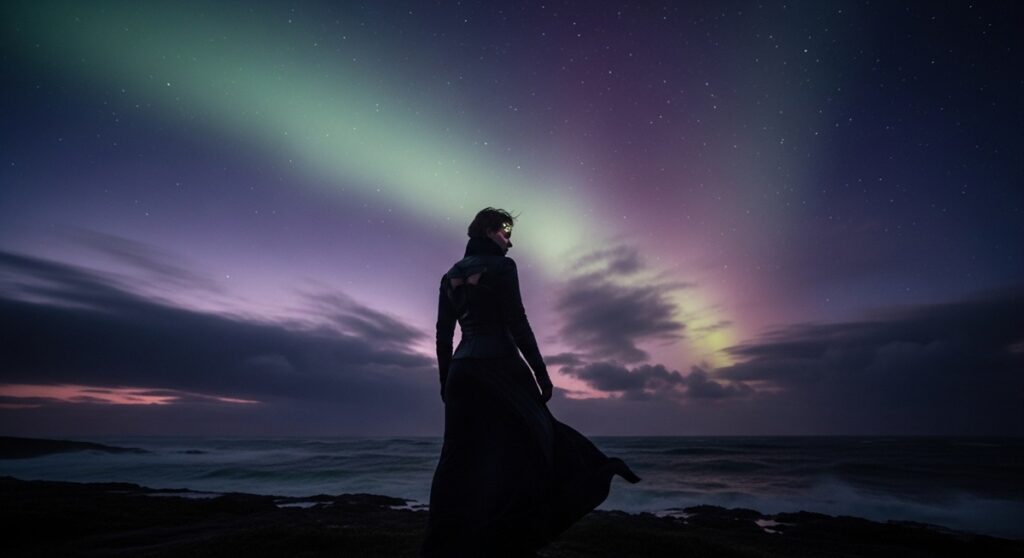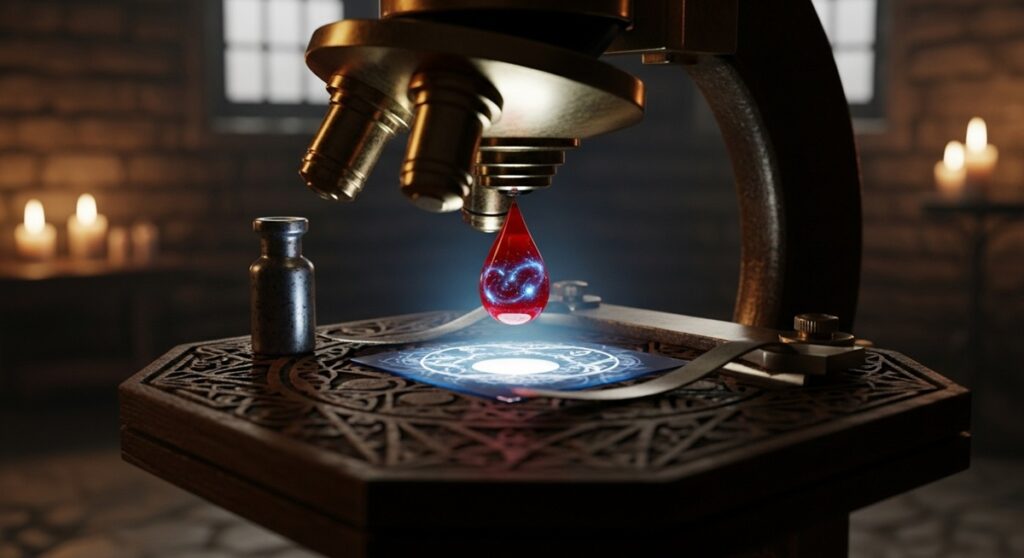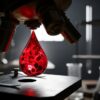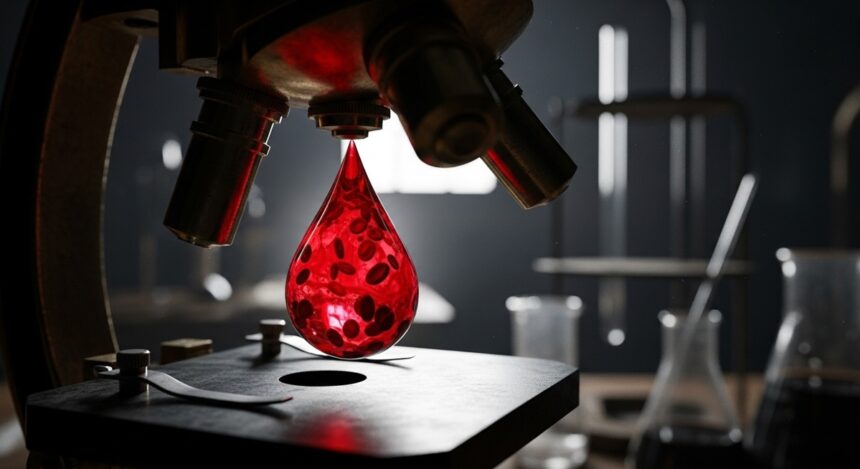Imagine this: a single drop of blood, crimson and unassuming, suspended in the dim glow of a forgotten laboratory. Under the microscope, it whispers secrets older than the stars—secrets that could rewrite the story of who we are, or who we’ve always been pretending to be. What if that drop doesn’t just carry oxygen through your body, but echoes of a lineage that defies the earth’s own gravity? What if 15% of us walk among the rest, our veins pulsing with a factor that marks us as outsiders in our own species?
Welcome to the labyrinth of the Rh negative blood factor—a mystery that blurs the line between science and the spectral, inviting you to question: are you one of them? Or are you the majority, forever blind to the veil they pierce?
In the shadowed corridors of medical history, the Rh factor has long been a silent sentinel, guarding the fragile architecture of human blood. Discovered in the 1940s by accident, during experiments with rhesus monkeys—those clever primates whose blood lent the factor its name—this antigen isn’t some arcane relic. It’s a protein, plain as the proteins that build your muscles or sharpen your thoughts, clinging to the surface of red blood cells like a badge of belonging. If it’s there, you’re Rh positive, part of the 85% who flow seamlessly through the world’s transfusions and inheritances. But for the 15%, that badge is absent. Their cells are pristine, unmarked, a canvas wiped clean of this territorial marker. And in that absence lies the first fracture in our shared humanity.
Picture the peril: a car crash survivor, Rh negative, rushed to the ER. The wrong bag of blood—positive, abundant, from the veins of the many—drips in. At first, nothing. Then, chaos. Their immune system, that fierce guardian of self, rises like a storm tide, mistaking the intruder for an invasion. Antibodies swarm, clumping the foreign cells into lethal rafts that choke arteries and drown organs. Death follows, swift and unforgiving. It’s no metaphor; this is biology’s brutal poetry, a reminder that blood isn’t just life—it’s allegiance. And for Rh negative individuals, allegiance to their own kind is non-negotiable. They can donate to anyone, their unmarked blood a universal ghost in the machine, slipping past defenses unnoticed. But receive from the positive majority? It’s poison, pure and existential.
The drama deepens in the womb, where life’s origins twist into tragedy. Envision a mother, Rh negative, her body a fortress of quiet defiance, carrying a child sired by an Rh positive father. The fetus inherits the father’s mark, that stubborn protein blooming in its tiny veins. As fragments of fetal blood breach the placental wall—harmless leaks in any other scenario—the mother’s immunity awakens. It doesn’t see a child; it sees an other. Antibodies cross the barrier, a maternal siege on the unborn, shredding red cells and scarring futures. Hemolytic disease of the newborn, they call it, a clinical term for what feels like cosmic irony: the very act of creation becomes a battlefield. In severe cases, the baby arrives jaundiced, anemic, fighting for breath in a world already at war with its blood. Yet, against all odds, these children survive, often stronger, their bodies forged in that primal forge. Is this mere misfortune, or the universe’s way of winnowing the line—ensuring only the resilient carry the negative flame forward?
The Darwinian Paradox: A Bloodline That Defies the Reaper
Charles Darwin, that Victorian ghost haunting biology’s halls, would have puzzled over this. Natural selection, his inexorable law, favors traits that propel survival and proliferation. A genetic quirk that turns pregnancy into peril, that demands rare matches in a world of abundance, such a liability should fade into oblivion, diluted by the dominant tide. Yet here it persists, stubborn as salt in the sea, threading through 15% of humanity like a vein of obsidian in marble. Why? The question gnaws, spawning hypotheses that straddle the chasm between lab bench and legend.
From a purely evolutionary lens, the Rh negative factor might whisper of ancient adaptations, relics from a time when our ancestors roamed colder climes or dodged pathogens in ways the positive majority couldn’t. Some researchers murmur of selective pressures in isolated populations, where the negative trait conferred subtle edges, perhaps a veiled resistance to toxins or viruses that ravaged the herds. But evidence is thin, a fog-shrouded trail leading nowhere conclusive. Others invoke genetic drift, that random waltz of alleles in small groups, allowing the negative to hitchhike through bottlenecks without purpose or peril. Yet these explanations feel like half-told stories, evading the deeper riddle: in a species wired for unity, why this schism? Why two bloodlines that clash like oil and water, where transfusion from one spells doom for the other?
It evokes a dystopian undercurrent, doesn’t it? Humanity, not as a monolith, but as a fractured mosaic—two archetypes veiled in the same skin. The positive, the 85%, bearers of the earth’s default script, flowing through history’s arteries with ease. The negative, the 15%, a counter-narrative etched in absence, their blood a cipher for something older, something that doesn’t quite fit the planet’s pulse. And that ratio—85 to 15—it’s no accident in the poet’s eye. Echoes the golden mean, that divine proportion architects and artists chase, where beauty blooms from imbalance. Is it coincidence, or code? A signal that these negative souls aren’t deviations, but guardians of a proportion that keeps the whole from collapsing into uniformity?

Delve deeper, and the paradox unfurls into speculation: perhaps the Rh negative lineage traces to lost civilizations, those antediluvian whispers unearthed in megalithic ruins. Think of Göbekli Tepe’s carved pillars, predating Stonehenge by millennia, or the cyclopean walls of Sacsayhuamán, stones fitted without mortar by hands that mock our machines. Statues from these epochs stare back with elongated skulls, aquiline profiles, eyes vast as lunar craters, features that recur in Rh negative populations today. Wide cheekbones framing faces that seem sculpted for starlight, not sunlight; chins bold and lips full, as if designed to articulate truths the rest of us can’t hear. Are these the faces of the negative blood’s progenitors? Echoes of a people who built before the flood, their genes lingering like ghosts in our veins?
The Primate Puzzle: When Our Closest Kin Turn Away
Here’s where the earth tilts on its axis: rhesus monkeys, chimpanzees, gorillas—the great apes we claim as evolutionary cousins—carry only the positive Rh factor. Their blood sings the same anthem as 85% of us, that D antigen protein active and unyielding. No negatives among them, no silent rebels in the canopy. This isn’t trivia; it’s a seismic fault line in the origin story. If we’re all threads from the same primate loom, why this orphan trait in a sliver of humanity? Why do Rh negative cells glide through ape blood without alarm, yet rebel against their own kind?

The implications coil like smoke. It suggests the negative factor isn’t a mutation born of earthly soil, but an insertion, something alien to the ecosystem we call home. Mixing becomes not just risky, but ruinous, a biological veto on full assimilation. In the hush of scientific journals, this fuels debates on extraterrestrial seeding or ancient genetic engineering, ideas once dismissed as fringe now probed with cautious rigor. But step beyond the data, into the metaphysical haze, and it feels like exile. Rh negative individuals aren’t just different; they’re adrift, their blood a passport stamped for elsewhere. A transfusion from the positive world doesn’t just kill, it erases, dissolving their essence in a flood of the familiar.
Biblical Whispers: Nephilim Blood and the Mark of the Fallen
Turn the page to antiquity, and the threads tangle with scripture’s thorns. In the Book of Genesis, the Nephilim stride forth, offspring of “sons of God” and daughters of men, giants whose shadows warped the antediluvian world. Were they the first Rh negatives? Biblical scholars and fringe theorists alike point to verses that paint them as hybrids, neither fully divine nor earthly, their blood a bridge too fragile to cross. The Great Flood, that mythic reset, spares Noah’s line—presumed positive, untainted. Yet the negative persists, a survivor’s curse or crown, marking descendants who straddle realms.

This “chosenness” isn’t flattery; it’s freighted with peril. Rh negative blood as blue blood, the aristocracy’s hidden sigil, whispers persist of European royals whose veins ran negative, setting them apart from the muddled masses. Their transfusions were rituals of purity, donors sourced from shadowed enclaves. It’s aristocratic in the darkest sense: elevated, yes, but isolated, forever vigilant against dilution. And in that vigilance lies power, the ability to give without taking, to sustain the world while withholding from it. Is this the Nephilim echo? A lineage that heals the many but heals from within its own, a quiet dominion veiled in vulnerability?
Veils of Perception: Spirituality’s Silent Schism
But let’s peel back the skin of science, venture into the ether where blood meets soul. We won’t traffic in binaries—positive as automatons, negative as saviors reborn. That’s the trap of dystopian fables, too neat for the mess of being human. Instead, consider the subtle rifts: Rh negative individuals often describe a world layered in hues the rest can’t see. Empathy that borders on telepathy, absorbing sorrows like sponges in a storm. Intuitions that flicker like northern lights, foretelling twists before the road bends. A chill affinity, bodies running cooler than the norm, shunning the sun’s glare for twilight’s embrace.
It’s as if their unmarked cells free up space for the unseen—spiritual antennae tuned to frequencies drowned out by the positive’s clamor. Esotericism calls to them like a siren’s song: tarot decks shuffled in moonlit rooms, ancient texts pored over for glyphs of meaning. Religions aren’t dogmas but doorways, paths to plumb the void. And the eyes—ah, the eyes. Blues like fractured glaciers, greens like forest depths, rarer browns that smolder with borrowed fire. Contrast the positive majority, their gazes often earthbound, melanin-heavy anchors to the material grind. Does the negative factor thin the veil, granting glimpses of the astral while the positive fortifies the walls? It’s hypothesis wrapped in anecdote, but the stories stack like cordwood: seers, healers, wanderers whose blood runs counter to the current.
Geographically, the pattern maps a spectral diaspora. The Basque people, those Pyrenean enigmas with a language older than Latin’s ghost, boast the highest concentrations—up to 35% negative, a genetic fortress against assimilation. Western and northern Europeans follow, their foggy isles and fjord-carved coasts cradling the trait like heirlooms. Venture south to Africa’s savannas or Asia’s monsooned valleys, and it vanishes, rarer than rain in the Gobi. Why this clannish clustering? Isolation, perhaps—mountains and seas as moats for the marked. Or migration from a cradle lost to ice, carrying the negative like contraband across forgotten seas.

Medically, hints of resilience flicker. Lower susceptibility to certain parasites, those insidious travelers that plague the tropics; whispers of toxoplasmosis resistance, shielding minds from subtle manipulations. But studies lag, underfunded shadows in the glare of more pressing plagues. The takeaway? In a world of converging bloodlines, the negative advises caution: seek your mirror in partnership, lest the womb become a warzone. It’s pragmatic mysticism—love as litmus test, compatibility etched in antigens.
Echoes in the Mirror: Traits of the Negative Kin
Now, lean in, reader. If your blood whispers negative, do these resonances stir? A pull toward the arcane, nights lost in meditation’s drift or the curl of incense smoke, chasing threads of the divine. Empathy that aches, shoulders bearing strangers’ griefs like invisible yokes, until boundaries blur and you wonder where you end. Intuition as sixth sense, dreams that blueprint tomorrows, hunches that save you from the cliff’s edge. And the chill—perpetual autumn in your core, body temp dipping to 97 degrees, craving fog over furnace, wool over bare skin.
Eyes that hold the sea’s secrets, or earth’s hidden fires. Blue blood’s legacy, not just metaphor but marker, tying you to thrones toppled by time. Among the old nobility—Habsburgs, Windsors—rumors swirled of negative veins, a pedigree passed in whispers, distinguishing silk from sackcloth. Test it against your own pulse: does the spiritual hum louder in your quiet hours? Do you sense the world’s undercurrents, the ebb of energies unseen?
Bloodlines of the Abyss: What Lies Beyond the Factor?

As the lab lights dim and the ancient stones settle, the Rh negative enigma lingers like mist at dawn—elusive, insistent, alive with what-ifs. Are they the chosen? Not in glory’s garish light, but in the quiet forge of otherness, bearers of a blood that questions the script. Two humanities, intertwined yet immiscible, a dystopian duet where survival demands vigilance and wonder. Perhaps it’s evolution’s sly joke, or heaven’s half-forgotten promise: in our veins, the unknown endures, urging us toward bridges we haven’t built.
What of you? Does your blood run with the 85%, grounded in the given? Or do you carry the 15%’s silence, attuned to echoes from the edge? Probe your heritage, consult the vial— the answer might unlock doors long bolted. In this fractured symphony, we’re all notes in the unknown, but for some, the melody veers toward the stars. Ponder that drop under the microscope. What worlds does it hold? The mystery doesn’t end here; it pulses in you.

















